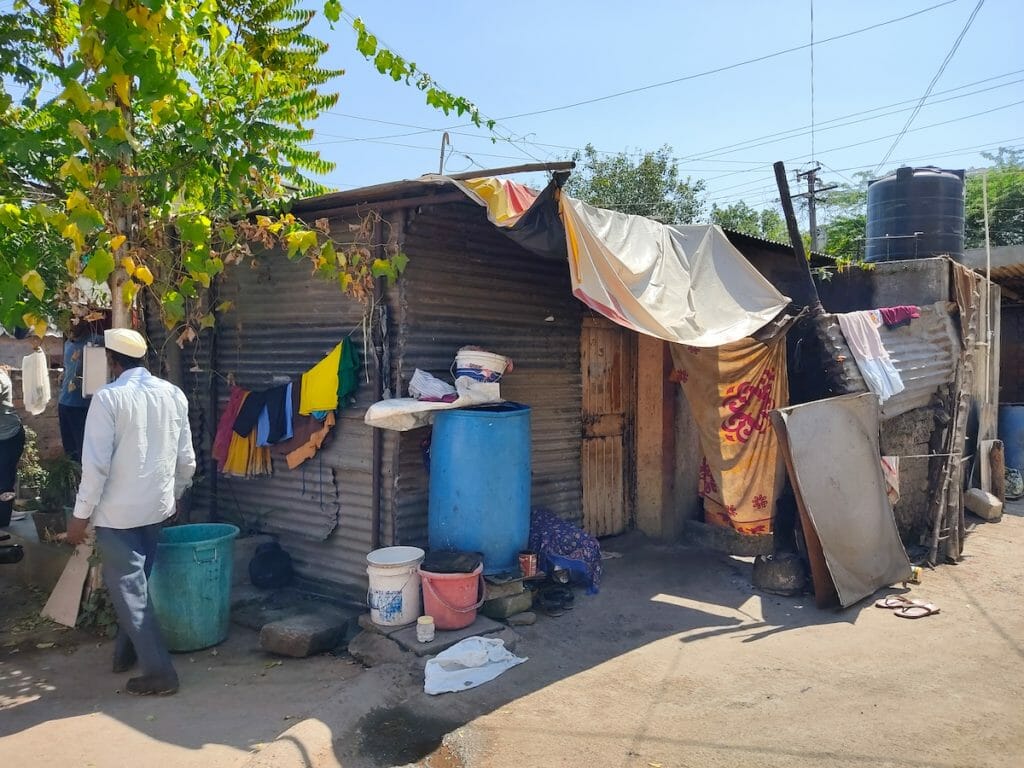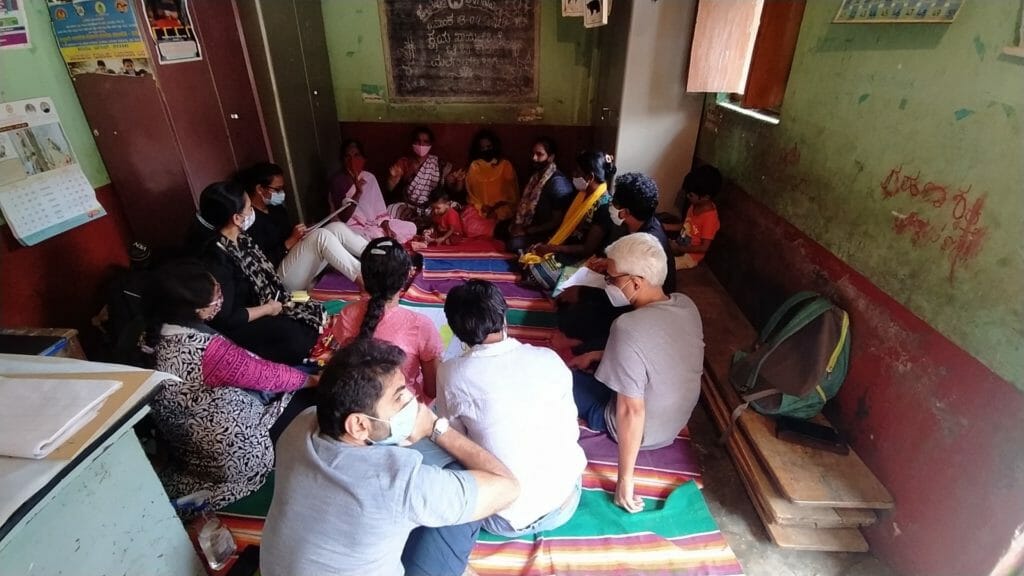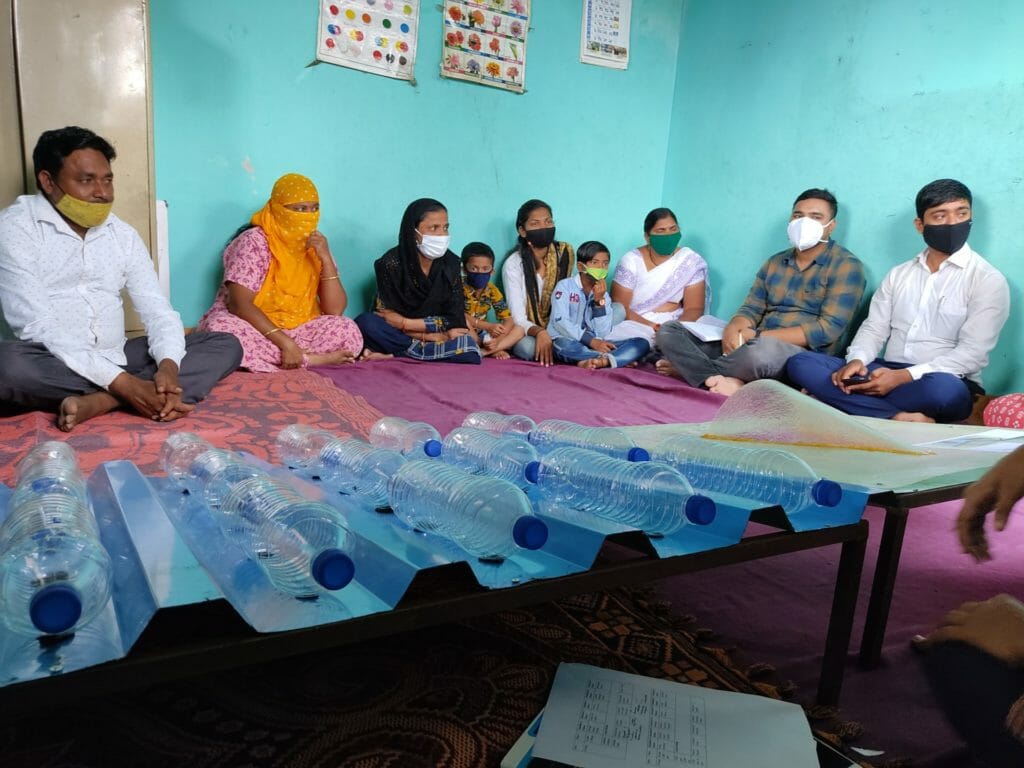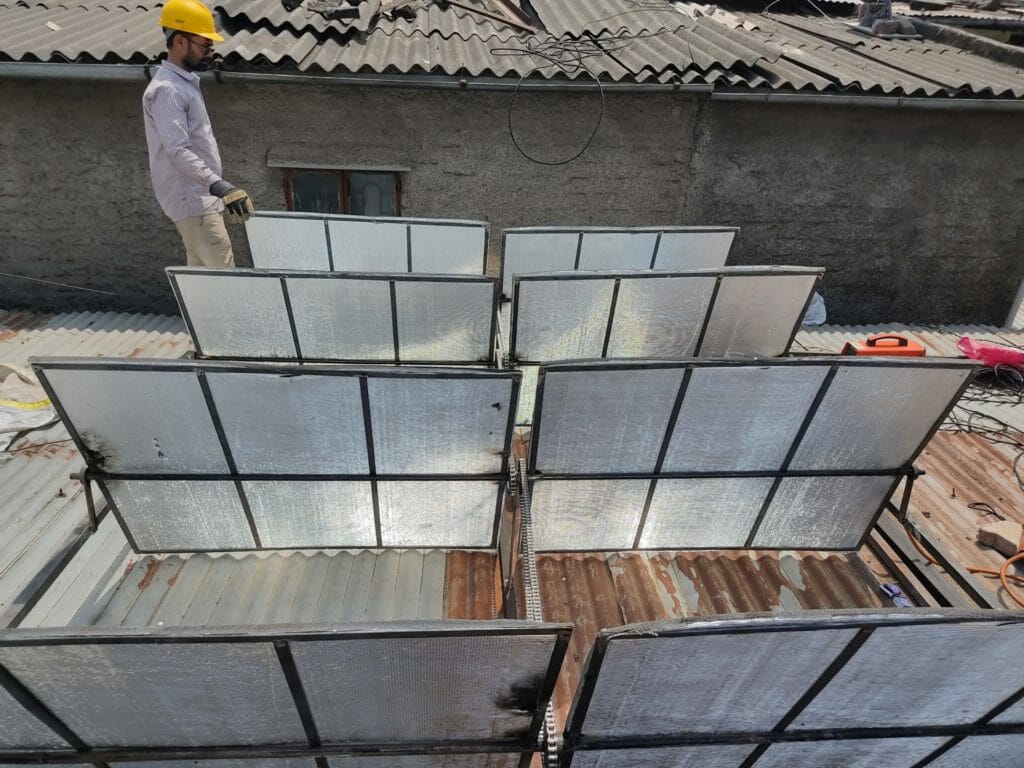“The house feels like a furnace during summers. We live in a very congested space which makes it difficult to sit inside the house and even more difficult for me to cook due to the heat. I get headaches and my kids experience skin problems too,” says Guna, a resident of Jyothipura, an urban poor settlement in Bengaluru.
Heat stress is not a new concept given the realities of rising local temperatures in India. But Guna’s plight, faced by every family living in tin-roofed houses in informal settlements, reflects the inequitable realities of heat stress in urban India.
Houses of the urban poor living in informal settlements have poor ventilation with only a ceiling fan to provide some thermal comfort while the affluent live in relatively well-ventilated houses, with air conditioners and backup power sources to cope with power cuts. This glaring energy inequity in cities calls for attention, given that a typical one-tonne, split AC consumes as much power as 25 ceiling fans.

In a time of climate crisis, we have to explore a range of interventions which can minimise heat stress — which are also sustainable and affordable for residents of informal settlements. While there have been some approaches — such as painting roofs white to reflect heat and dormer windows that allow hot indoor air to escape — cooling mechanisms that block the sun’s radiation on a tin-roof house are rare.
Read more: Bengaluru warming faster than global mean, will become much hotter: Dr J Srinivasan, IISc
Co-creating cooling solutions in urban poor settlements
The FairConditioning programme curated by our team at cBalance is an education, capacity building, and pilot initiative for Building-Cooling Demand-Side-Management (DSM). The Informal Housing Thermal Comfort Project under this programme is centred around co-creation and participatory action and is aimed at working towards addressing cooling needs ‘with’ and not just ‘for’ inhabitants of informal housing settlements. This is to ensure that the people who are bearing the brunt of heat stress are involved in decision-making, unlike conventional top-down implementation programmes.
This article describes the process of engaging with communities and the learnings that continue to emerge during this process. This programme is currently being implemented in the settlements of Jyothipura, Bengaluru and Shinde Vasti, Pune.
Listening to urban poor communities
Our project team began by collaborating with grassroots NGO partners Bengaluru-based Hasiru Dala and Pune-based MASHAL. Hasiru Dala is a social impact organisation that works with waste pickers and other waste workers to ensure a life of dignity and MASHAL works with communities inhabiting informal settlements with a focus on provisioning adequate shelter and a healthy living environment, with access to basic services as a human right.
We started by facilitating rapport building with community members in Jyothipura and Shinde Vasti, respectively. This was then followed by surveying a few households in these localities to understand if heat stress was an issue they face and if they would be willing to participate in an experimental endeavour aimed at co-creating thermal comfort techniques suitable for the houses they live in.
Households who were willing to participate were invited to a ‘listening workshop’ to explain the issues they experience across different seasons during the year. It was vital to understand the impact of heat stress on the lives of these vulnerable communities. Nandini, a resident from Jyothipura who participated in the listening workshop said, “I feel breathless and dizzy during summer which makes it difficult to perform household chores comfortably.”
Headaches, dizziness, breathlessness and skin irritation are a few among a range of ailments that people battle during summer. Sleep deprivation was a major concern for residents since the indoors cool only late at night. Vijayalakshmi from Bengaluru said, “We face lack of sleep due to heat during summers which gets worse during power cuts.”
Another major house structure-related issue the residents talked about was water leakage during the rains, which adds to their woes. It became evident that cooling solutions would need to be paired with waterproofing mechanisms.
The listening workshop was also a space for community members to share existing heat stress battling techniques they currently use. Residents sprinkle water on their rooftops, wipe the fan and floor with a wet cloth during the day, and place hay on the roof.

The listening workshops were followed by participatory design workshops.
Read more: Dire warnings: More deadly heat waves, more often, which could cause more deaths
Participatory design workshops to explore solutions
Our design team researched a few designs and materials that were used as prompts for discussion during the participatory design workshops. These were intended to create a space for the communities to share their opinions and suggestions on the initial designs in terms of their contextual feasibility to ensure that the final solutions would truly serve their needs. The initial materials and designs presented to the community included alufoil, eco board, glass wool, water-filled PET bottles, rooftop gardens and dormer window.
A few critical issues that surfaced during the workshops were: rodents that frequent homes could nest in and also damage certain installations. Animals like cats, goats and dogs walk on roofs and could damage solutions installed on the roof. Certain solutions could be dangerous and could trigger fires if they came in contact with overhead electrical wires.
Residents also rejected the glass wool solution outright based on experiences they had with the material while working as factory helpers. Besides sharing concerns, community members were encouraged to share alternatives to refine the design finalisation process.

We shared the refined designs with community members for their approval. Additionally, certain installations were paired with certain households based on the residents’ preferences for a given solution and the suitability of a given house structure to a given solution. The list of these pairings was shared with residents to seek their consent to proceed with installations; they were given the choice to refuse to work with a solution if they did not feel comfortable with it.
Initially, we installed the shortlisted solutions in five of the households in each locality initially. These were then monitored for a month to understand if the installations were functioning without obstructing the households’ daily functioning. Certain experimental solutions needed refinement due to issues like water leakage or difficulty in operating. The refined designs were then installed in 10 new homes in Pune and five homes in Bengaluru.
We invited residents who embarked on the experimental journey to share their feedback on the effectiveness of the redesigned installations. We facilitated a resident experience tour where people from Shinde Vasti and Jyothipura visited each other’s homes to share feedback on the installations.
Residents’ feedback and observations
Overall, 10 experimental solutions were installed across 25 structures across Pune and Bengaluru:
- Water-filled Pet Bottles, Rooftop Garden (wooden frame)
- Rooftop Garden (Grow Bags)
- Wood Wool Panels
- Dormer Window
- Ecoboard (Chain Sprocket)
- Ecoboard (Sliding)
- Alufoil (Static), Alufoil (Pipe Motor), Alufoil (Chain Sprocket) and Alufoil (Curtain Mechanism). Alufoil is a cross-linked polyethene foam (also known as XLPE). It is covered with a low-emissivity and high reflectivity aluminium coating on one side which ensures no heat is emitted inside the space where it is installed.
All installations except for Rooftop Garden and Dormer Window have been installed in Bengaluru, while all installations except the eco board installations and the alufoil sliding installation have been experimented with in Pune.
Feedback from homeowners demonstrated an amalgam of varying and similar degrees of effectiveness and acceptance of this range of solutions, both across and within localities themselves.
For instance, in a community library space with a PET bottle installation, feedback by Hasiru Dala who was involved in the creation of the space revealed that no temperature difference was observed post-installation.
Contrastingly, a homeowner in Shinde Vasti with the same installation said: “Earlier it was too hot for my family members to sit inside the house during summers. Now my family members can sit inside the house because it is cool. Cooling is experienced due to the installation during day and night.”
Chaure, a resident in Shinde Vasti indicated that the ‘Wood Wool Panel’ installation (which was used in place of the rejected glass wool insulation) was effective. “Earlier, my house used to heat up between 10 am-9 pm but It is cool now and we are comfortable,” the resident said. “My son who works a night shift is able to sleep better in the house now. The fan is also turned on only during the night particularly to keep the mosquitoes away.” But another resident with the same installation in Shinde Vasti said her house still feels as hot as it did earlier in the afternoon and cools down only in the evening.
Residents in Bengaluru felt that the installation was not supportive of minimising heat stress in their homes, either. This indicated that there are contextual differences between households both across cities and even within the same locality.
Factors which impacted the contextual differences in the effectiveness of the cooling mechanisms were:
- Macro-climatic factors: Bengaluru summers are high in humidity due to frequent rains and Pune summers are hot and dry. While the installations focused on temperature reduction they were not equipped to support humidity reduction i.e. all solutions except for the dynamic ones which functioned on the ‘radiant barrier’ and ‘night-sky radiation’ principle and the dormer window which was based on the principle of ventilation, focused on temperature reduction through creating a static heat barrier. Therefore certain installations were more effective in Pune as opposed to Bengaluru.
- Micro-climatic factors: The microclimate is impacted by structural factors such as the material of the walls and ventilation in addition to the presence or absence of shade, etc. Therefore house structure and location-specific factors were influential in determining the difference in the effectiveness of the same installation within the same locality.
A few mechanisms such as the ‘Alufoil Chain Sprocket’ mechanism installation (a dynamic installation which can be closed during the day to shield residents from the sun’s radiation and opened at night to allow heat trapped in the house to escape), received encouraging feedback from residents in both localities. A resident in Bengaluru mentioned: “The use of the fan has reduced after the alufoil chain-sprocket installation and we can sleep better at night”. Similarly, a resident in Pune mentioned,”My family is able to sleep better after the alufoil chain-sprocket installation.”

Some families asked that the installations in their homes be removed. The diverse experiences of residents with similar and different solutions reinforced the need to co-create contextualised responses with the people who bear the brunt of heat stress, and any other issue that matters to them.
The installation monitoring process is continuing with support from the community and we are continuing to engage with them. Given that this was the research and development phase of the project and that the installations were undertaken on a small scale, the fabrication and installation costs were high. The costs were met through funding by the Ashden Fair Cooling Fund. Future efforts will therefore focus on minimising the costs of the retrofits to increase their affordability. The intended approach to work towards this is mentioned below.
Future plans
The larger goal of the project is to collaborate with women’s cooperatives and share finalised co-created designs of effective installations with them and other interested local entities. We want to build their capacities to fabricate, install and maintain thermal comfort retrofits in their communities. The hope is to have a cadre of women and local persons who can spearhead the movement for heat stress adaptation and mitigation/ thermal comfort by offering passive cooling retrofits as a low-cost service within their communities. Capacity building on integrating affordable financial structure mechanisms in women’s cooperative institutions will be undertaken wherever necessary. Additionally, other stakeholders such as fabricators, and installers, who are interested in and can provide thermal comfort retrofits in their own communities and across settlements will be supported too.
Our team is also working towards facilitating the implementation of more such experimental initiatives in informal housing in collaboration with grassroots NGOs and government entities in other cities. As temperatures rise we must co-create, contextualise and act, now more than ever!